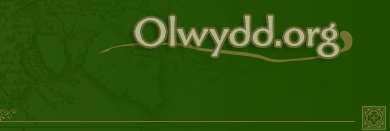Please take note that some this information may be out of date with respect to the latest origami releases.
Origami is the art of folding paper. By taking a sheet of paper and
folding it into a particular shape you can create not only a work of
art, but a unique gift. Origami is rarely practiced in the Realms
due most to the high costs involved. A basic sheet of origami paper
is 250 copper Kronars and can go all the way up to several gold for
the marbled or gold varieties. Recently envelopes of origami paper
have been introduced to the realms and offer a much more convenient
way of dealing with the paper and quite possibly leading to origami's
more widespread use.
Origami is yet another way to train mech lore, and if you don't mind
the costs involved can be a fun and rewarding way of training the
skill, as opposed to crushing or scraping. In addition it is also a
good way to learn scholarship. Although its gains in scholarship are
not as large as in mech lore, it can be a good supplement in
learning the skill. So, if you think you would like to give origami
a try read on below for futher instructions.
The most convenient place for folks in Crossing to find origami
supplies is the tent in Leth Deriel. You can purchase various
papers, origami cases (Note: these are not worn, so not very useful)
and most importantly for beginners, an origami primer.
Currently, you can purchase these instructions in Leth for 1250
kronars:
mouse instructions, some crown instructions, some phoenix instructions, some yak instructions, some ship instructions, some bird instructions, some crow instructions, some cat instructions and some dragon instructions.
In Mer'Kresh you can purchase the following items:
jackal instructions and some vulture instructions. a fine china origami case, a leather origami case, a cloisonne origami case, a slim maple origami case, a red enameled origami case, a varnished elm origami case and a polished oak origami case.
On Ratha, you can purchase the following:
Instructions:silverfish instructions, goblin instructions, mask instructions, ship instructions, gryphon instructions, crow instructions, mouse instructions, horse instructions, dragon instructions, bird instructionsPaper:
marbled (1200 L), scarlet (850 L), silver (1000 L), blue (500 L), lined (500 L), white (350 L), gold (2000 L), plain (200 L), green (600 L)
In Aesry you can purchase the following items:
vulture instructions, phoenix instructions, horse instructions, cat instructions, dragon instructions, ship instructions, dolphin instructions, jackal instructions, raven instructions and some yak instructionsCases:
a tarnished steel origami case, a pine origami case, a bronze origami case, a jade origami case, a turquoise origami case, an etched glass origami case, a brass origami case, a wicker origami case and a driftwood origami case.Paper:
green origami paper, plain origami paper, gold origami paper, white origami paper, lined origami paper, blue origami paper, scarlet origami paper, silver origami paper and marbled origami paper.
Once you have your kit it won't take long until you've begun folding
origami. Take out the Origami Primer and read it:
read primer
Origami is the ancient art of paper folding. By using this technique, and finely made, carefully cut and squared paper, one can learn to make all manner of delightful things. The recommended procedure is to choose a piece of origami paper, then look over the instructions. Read them through to get some idea of how difficult the project will be. It is not recommended that beginners attempt the more difficult projects, as this results only in frustration and the waste of good paper. When you have decided upon a project, study the instructions carefully, and begin to fold the paper. Continue folding until the project is completed, or until you have made a mistake; if a mistake is made, the only recourse is to discard the ruined paper and try again. This book contains instructions for five simple figures, all of which are suitable for beginners. They are a hat, a star, a flower, a medallion, and a fish. To see how to make any of these figures simply read the instructions for that figure.
To read futher instruction on a design type in the following:
read <design> instructions Choosing either hat, star,
flower, medallion, or fish for the the design.
You glance at the flower instructions, and recognize this as a very easy project. You could probably fold it with your eyes closed; it certainly wouldn't be any kind of a challenge.
This will give you an idea of the difficulty of the
design. Obviously with the above message folding the design won't
train very well, but it shows what you can expect from the primer
with some pre-existing skill in mech lore. It would seem that the
difficulties aren't always accurate and are probably based in some
part on your scholarship skill.
Now, take out a sheet of paper from the origami case and we can
begin to fold the design. Begin by studying the design you wish to
fold:
study <design> instructions
You study your <design> instructions and begin to fold.
This is the message you will get when you begin to fold. After this point, you no longer need the primer and can either put it away or pass it along to someone else who may want to fold a piece described within. If you get the message:
You turn the instructions this way and that, but just can't make any sense of them.
The item is simply going to be too difficult to fold and you should
move back up the list trying to find something in your skill range.
To continue folding type the following:
fold paper
You will most likely have to do this several times before the piece
is completed. If you mess up during this process you will have to
start with a fresh piece of paper. It should be noted that you needn't
hold the primer or instructions in your hand in order to read it, but
can instead say read <design>
instructions in primer in my <container>.
In addition to the main primer, there is also a sample primer that
contains only the dragon and star patterns.
Origami envelopes provide 10, 25, 50 or 100 sheets of paper in a single item, somewhat akin to wedding invitations in game. In addition to cutting down the item count on your character, it's also conveniently belt worn for ease of folding and weighs a scant 10 stones, so you needn't worry about weight. In order to use the envelope, simply pull envelope with a hand free in order to get a single piece of paper.
Most origami items have a few verbs associated with them and as more information is found, it'll be listed here. In general, doing a poke <model> or shake <model> will end up with a crumpled and useless piece of paper, but not all of the forms accept that verb. Be careful just the same if your intention is to keep the item or poke <model> twice to get rid of it for good. Several forms also accept the exhale <model> verb that gets rid of the item in a fun way. Also, if you're feeling particularly proud, try to snuggle it.
- Hat: rub, pull, punch and other verbs for hats. This is basically considered a piece of clothing and as such does not use the generic origami verbs mentioned above.
- Animals accept the pull verb and do some cute things depending upon which model you use.
- Dragon
- Hat
- Bird
- Star
- Goblin
- Flower
- Jackal
- Fish
- Dolphin
- Ship
- Silverfish
- Medallion
- Gryphon
- Cat
- Horse
- Mask
- Phoenix
- Mouse
- Yak
- Raven
- Crown
- Vulture
This list was done by Apu and posted on the DragonRealms forums from where I scooped it up. All the credit goes to Apu.
This origami calculator is a very handy tool for figuring out which pattern is best for you, based on the factors involved in the origami system.


